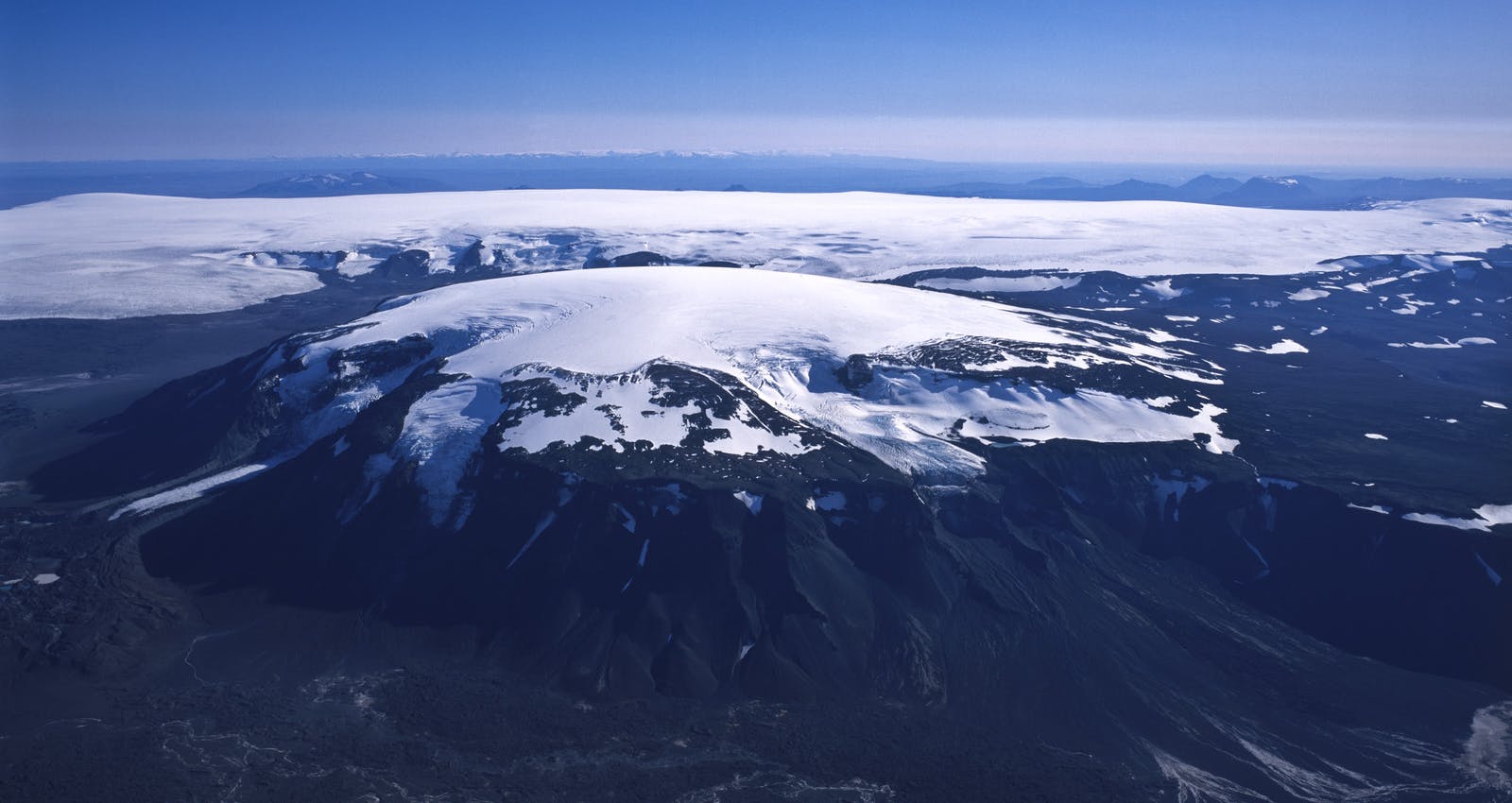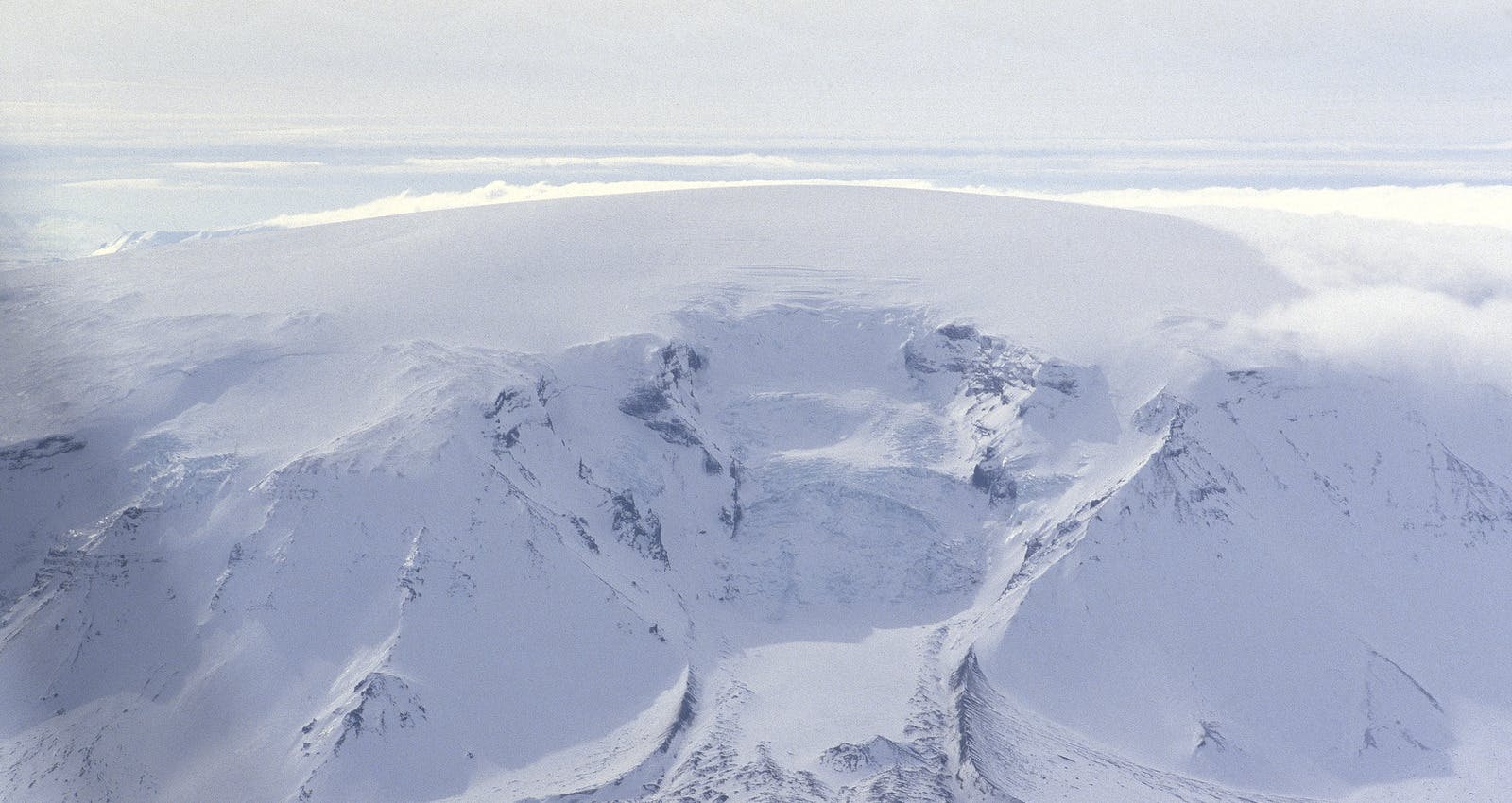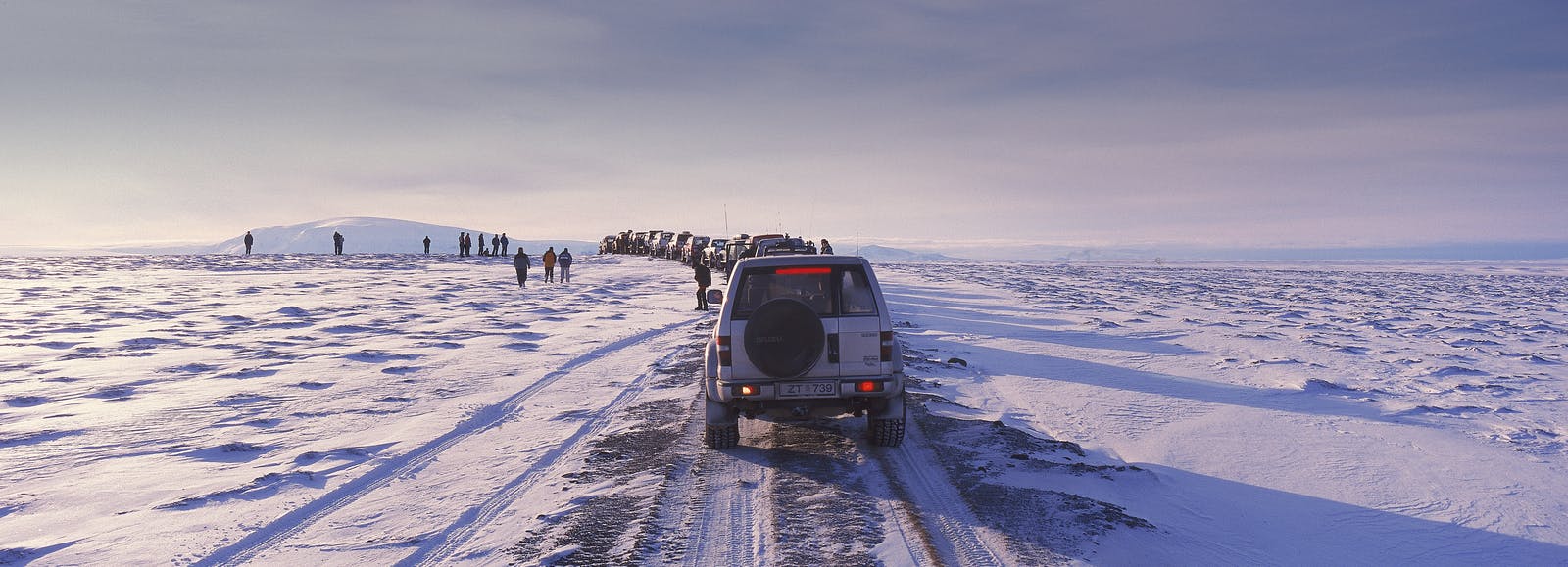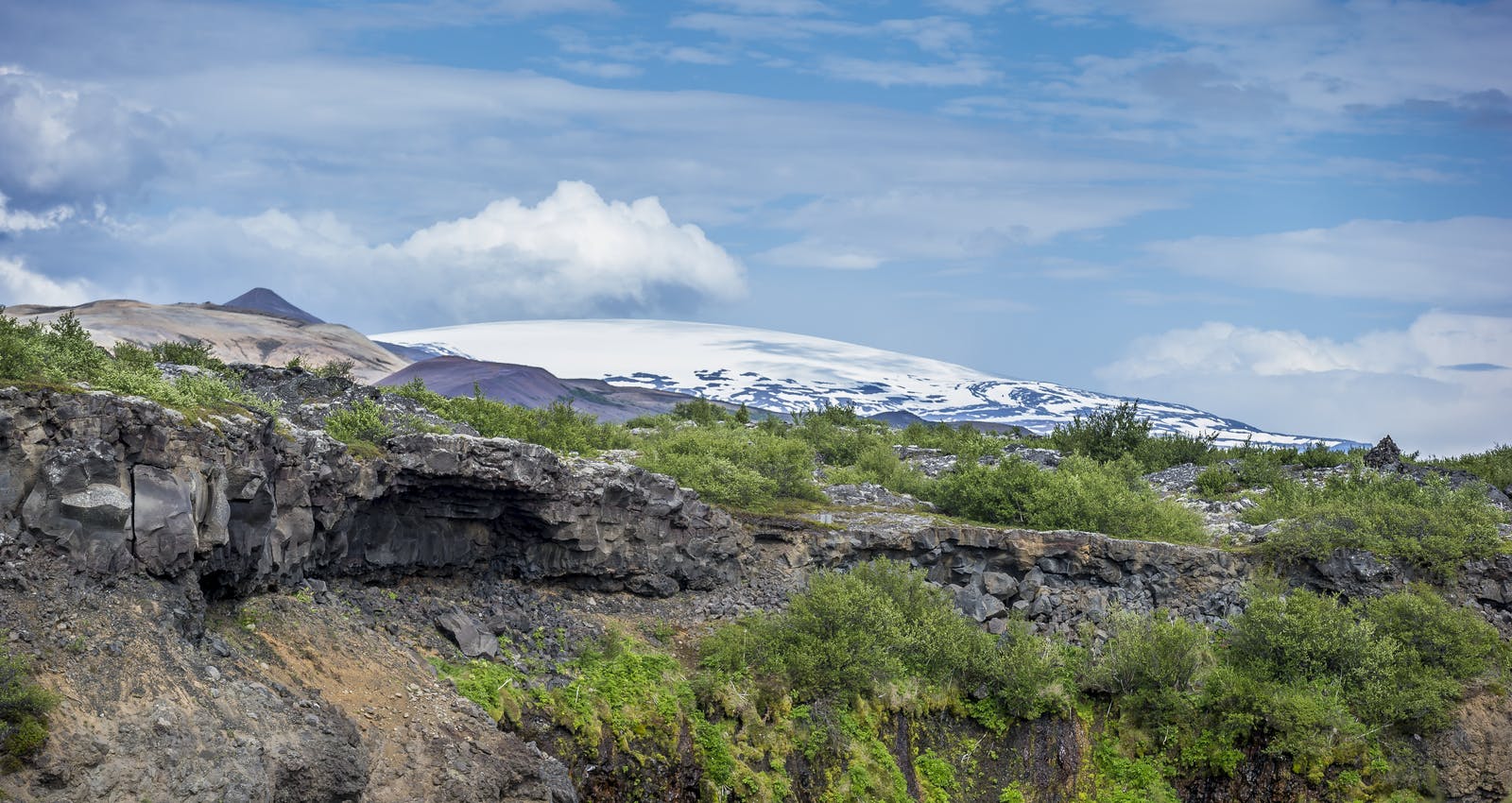
Guide to Iceland's Eiríksjökull Glacier
Situated in the middle of Iceland's rough landscape, Eiríksjökull is like a giant billboard showcasing the country's amazing geology. This colossal glacier, with its icy expanse and imposing presence, is a captivating symbol of Iceland's natural beauty. The glacier is located in the Hallmundarhraun lava field, which also houses the Surtshellir lava tube, the longest cave in Iceland and many other large caves.
Eiríksjökull is situated in the western part of Iceland, dominating the landscape with its grandeur. The glacier is nestled within the vast volcanic highlands, contributing to the dynamic and diverse topography of the region. Surrounded by other glaciers and punctuated by volcanoes, Eiríksjökull forms a stunning backdrop against the Icelandic sky.
Eiríksjökull is northwest of Langjökull. It covers an area of 22 square kilometres (8.5 square miles) and reaches a height of 1.675 metres (5.495 feet), which makes it the largest table mountain in Iceland. Eiríksjökull is one of the ten largest glaciers in Iceland. The mountain itself is rather young. It is formed in a huge subglacial eruption during the ice age. The rock type is basaltic hyaloclastite, and the volcano type is the so-called tuya.
Its proximity to bodies of water, including rivers and lakes, adds to the interconnected beauty of the region. The glacier's runoff feeds into these waterways, influencing the local hydrology and sustaining the surrounding ecosystems. The interplay between Eiríksjökull and its neighbouring landscapes creates a harmonious dance of elements that defines Iceland's natural allure.
Glaciers in Iceland

Beyond their enchanting beauty, Iceland's glaciers hold significant environmental importance. These icy giants serve as crucial sources of fresh water for the island and play a vital role in regulating its climate.
Perlan offers visitors a chance to dive into Iceland's extraordinary natural marvels through a range of exhibits and immersive presentations. The displays blend cutting-edge technology with interactive experiences, providing a mix of engaging information and stories that make learning both enjoyable and educational.
History & Icelandic Folklore
Eiríksjökull's story is intertwined with Iceland's geological past. Formed through the slow but relentless movements of glacial ice, it carries within it the history of the land. Over centuries, the glacier has shaped valleys and moulded the terrain, leaving an indelible mark on Iceland's topography.
Beyond its geological significance, Eiríksjökull has found its place in local myths and legends. It is named after one of the outlaws in Surtshellir cave. According to the Book of Settlement and old legends, a group of outlaws, the Cavemen, lived in Surtshellir, stealing food and animals from the farmers. Finally, the farmers attached the Cavemen and killed them in a battle. Only one escaped by climbing the rocky slopes of the glacier and crossing the ice dome. This was Eiríkur, and after that, the glacier got his name. The tales of early settlers and their encounters with the glacier add a mythical layer to Eiríksjökull, enhancing its cultural importance.
Modern Day Relevance

In the contemporary era, Eiríksjökull has become a focal point for scientific research. Glaciologists and climate scientists study the glacier to understand the impacts of climate change on Iceland's ice caps. The melting rates and glacial retreat of Eiríksjökull serve as valuable indicators of broader environmental changes, influencing global discussions on climate policy and adaptation strategies.
For tourists, Eiríksjökull offers a mesmerising playground of ice. Ice treks across its vast expanse provide adventurers with a unique and thrilling experience, allowing them to witness the glacier's beauty up close. The surrounding areas, including lava fields and volcanic landscapes, add to the allure, making Eiríksjökull a key attraction for those seeking both adventure and natural wonders.
Challenges Faced by Eiríksjökull
Despite its grandeur, Eiríksjökull is not immune to the challenges of the modern world. The most pressing concern is the impact of climate change. As global temperatures rise, Eiríksjökull experiences accelerated melting rates and a retreat of its glacial boundaries. This not only poses a threat to the glacier itself but also has far-reaching consequences for local ecosystems and communities.
Human interference also poses challenges to Eiríksjökull's well-being. Increased tourism, while providing economic benefits, brings with it the risk of pollution and habitat disruption. Efforts to strike a balance between tourism and conservation are crucial to ensuring the longevity of this natural wonder.
Conservation Initiatives

Recognising the ecological importance of Eiríksjökull, various conservation initiatives have been implemented. The Icelandic government, in collaboration with international organisations and local communities, is actively working to protect and preserve the glacier. These initiatives include sustainable tourism practices, waste management strategies, and educational programs to raise awareness about the fragility of Iceland's glacial ecosystems.
The implementation of responsible tourism practices, such as controlled access to sensitive areas and waste reduction measures, aims to mitigate the negative impact of human activities on Eiríksjökull. The involvement of local communities is crucial, as they play a vital role in safeguarding the glacier and promoting sustainable practices within the region.







